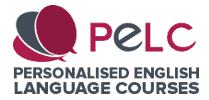Using the present perfect to introduce life experiences
In another post on this blog, I advise English language learners to focus on four tenses which are most commonly used in everyday speech. One of those aspects is the present perfect, which is used in a variety of situations. This time, I’d like to concentrate on the use of the present perfect to introduce life experiences.
Personally, I don’t teach pointless tense aspects such as the future perfect continuous or the past perfect passive. I don’t believe I’ve ever used them in my life whilst having a conversation with someone. I certainly can’t imagine my students using them. Besides, such grammar points are more suitable for written English - not spoken English.
I’m only concerned with USEFUL grammar. That is, grammar that helps my students to detail what they’ve experienced and achieved in their lives. Well - there’s no better aspect than the present perfect to introduce life experiences and achievements.
FORMING THE PRESENT PERFECT TO INTRODUCE LIFE EXPERIENCES
The present perfect aspect is formed by using ‘have’ / ‘has’ + the past participle. The past participle is the form of the verb used in forming perfect and passive tenses. It’s often referred to as the third form. This is because every verb has an infinitive form (watch), a past tense (watched) and a past participle - the third form (watched).
For the majority of verbs, the past tense and the participle forms of the verb are the same. Moreover, verbs in the past participle form usually end in the letters -ed. Take a look at this table:
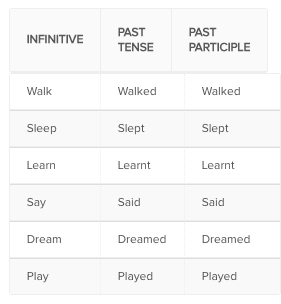
There are also quite a few irregular verbs. This means that the past tense forms and the participle forms aren’t the same. Feast your eyes on this table:
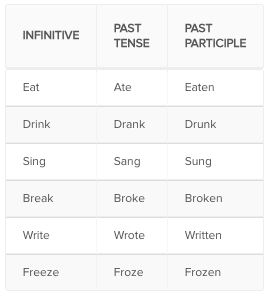
Let’s create some sentences to put all this theory into action. Remember that it is perfectly natural to use contractions when you speak English (“I’ve”, instead of “I have” and “He’s” instead of “he has”):
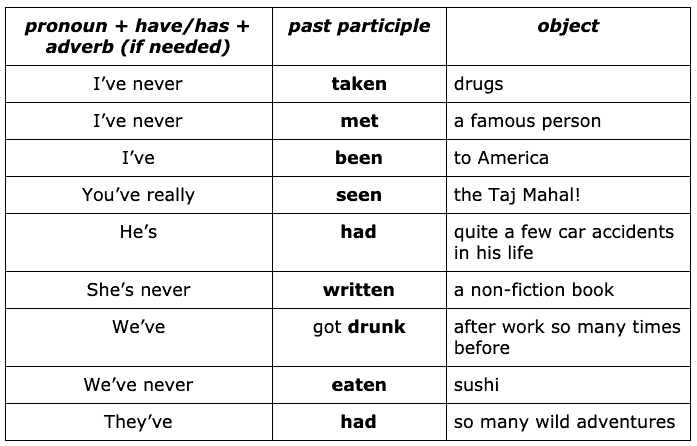
DECIDING WHETHER TO USE THE PAST SIMPLE TENSE OR THE PRESENT PERFECT SIMPLE TENSE
To decide whether you should use the past simple tense or the present perfect simple tense, it all depends on whether you wish to state exactly WHEN an action took place.
Compare the following:
a. David went to Berlin last month
b. Yeah, David’s been to Berlin before
In a, we are concerned with WHEN the action took place.
In b, we are concerned with the fact that David HAS experienced something. However, there are no specific references to time. All we know is that David has been to Berlin in his life.
Hence, in b, David may have been to Berlin a number of times in his life. When using the present perfect to introduce life experiences, it’s common to add the NUMBER OF TIMES something has happened.
Let’s extend b again:
Yeah, David’s been to Berlin before. In fact, I think he’s been there four or five times since he caught the travel bug in his late teens.
ASKING ABOUT OTHER PEOPLE’S LIFE EXPERIENCES USING THE PRESENT PERFECT
The table below illustrates how best to ask people about their life experiences:

The use of ever intensifies a question, but it’s perfectly fine to ask questions without ever.
MIXING THE PRESENT PERFECT AND PAST SIMPLE | THE 1-2-2-2 RULE
This post is predominantly about using the present perfect to introduce the life experience you wish to talk about. However, in order to give full details about life experiences, it’s usually a clever move to combine the present perfect and past simple.
In a recent exercise with some of my students, I prepared fifteen questions for them beginning with “Have you (ever) …?”
When it came to them orally responding to the questions, I tried to get them to think in terms of numbers in order to organise their answers.
Let’s have a look at one of my student’s answers to a selection of questions and analyse what I mean by “thinking in terms of numbers”:
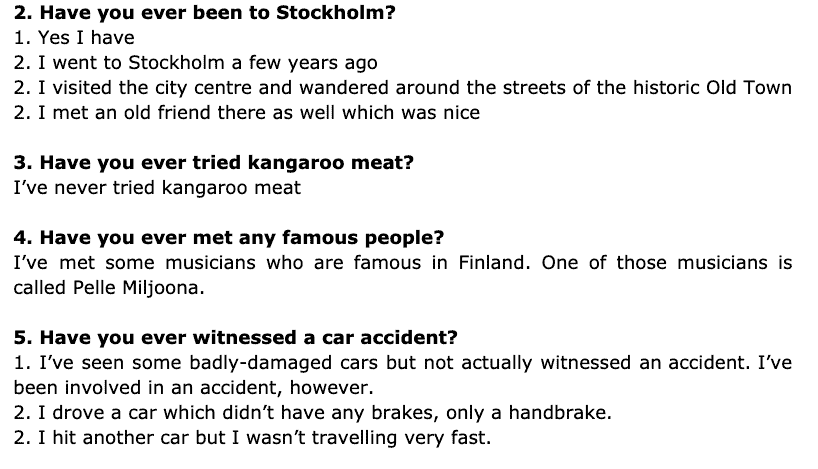
As you can see in the second question, I taught my students that there’s not much they can do with the present perfect when their answer is positive. They can answer something like “Yes I have” or “I have” and move on to the past simple.
In questions 2, 5 and 6, each number 2 represents PRECISE DETAILS about a particular experience. All of these additional details should be in the past simple.
Even when your answer may be negative, you should still look to make use of the present perfect. In 5, for example, the student mentioned that he’s seen some badly-damaged cars in his life, despite having never witnessed an accident.
TYPICAL ERRORS WHEN DESCRIBING LIFE EXPERIENCES WITH THE PRESENT PERFECT AND PAST SIMPLE
Despite my best efforts to guide students with the 1-2-2-2 pattern, it is inevitable that some initial confusion may arise when choosing between the present perfect and past simple.
Here are some of the most frequent mistakes I’ve noticed:
1. Adding details with the present perfect instead of the past simple
Unsurprisingly, it’s been difficult for some of my students to make a swift transition from the present perfect to the past simple soon after replying to a question.
Here’s one example from a student who talked about his time on the Greek island of Zakynthos:
Question: Have you ever been to Rhodes?
My student's response:
* I haven’t but I’ve been to Zakynthos [a good start]
* I’ve been to four or five places on the island ... [at this point, the student should have switched to the past simple to give extra details = I visited / went to four or five places on the island]
2. Saying “I’ve been in” or “I was never in” instead of “I’ve been to” or "I've not/never been to"
Many of my students say “I’ve never been in” instead of the correct “I’ve never been to”.
When it comes to my Polish students, the utterance, "I've been in", may result from language interference. This is the effect a language learner’s mother tongue has on the production of an utterance made in a second language.
Polish people might directly translate “nie byłem w Grecji” as “I was never in Greece”. If they’re more on the ball when it comes to producing the present perfect, they may say “I’ve never been in Greece”. This is because the Polish preposition w can generally be translated as in in most contexts in English.
Another reason students might say in is because they're not aware that been is the third form of the verb go. They might associate been with the verb be. Of course, it’s more natural to say “I was in …” than “I was to ..” so this may be why many lower-level some learners of English say “I’ve been in …”.
3. Using the present perfect with “the first/last time ..”
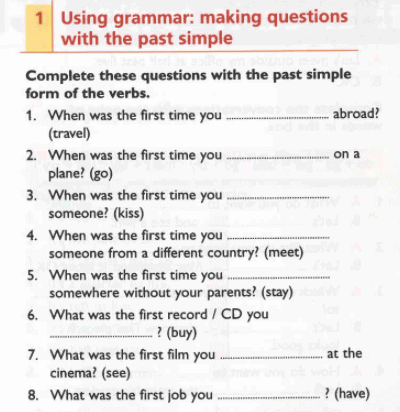
I have done the exercise in the screenshot above before with several students. It made me realise that I’ve heard many students use the present perfect with “the first time” and “the last time”.
The two chunks - “the first time” and “the last time” - are typically associated with the past simple because it’s expected that a specific time reference will follow:
- The first time I travelled abroad was on a school trip to France in 1997. We visited Paris and several places in northern France, including Mont Saint-Michel and Bayeux
- The first time I travelled by plane was back in the summer of 2006. I flew from Luton to Kraków, where I stayed for six weeks
CONCLUSION: PRESENT PERFECT TO INTRODUCE LIFE EXPERIENCES - PAST SIMPLE FOR THE DETAILS
Contrary to popular belief in the world of ELT, the present perfect does not describe life experiences. In fact, the present perfect introduces life experiences. It is the past simple that does most of the leg work. Students should provide details and time references relating to a specific experience in the past simple.
By using and visualising the 1-2-2-2 pattern discussed above, English language learners are able to describe life experiences in a very convincing and highly structured way.
